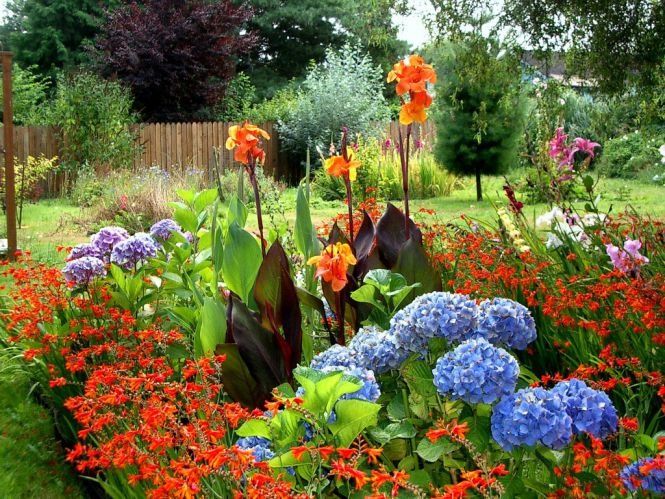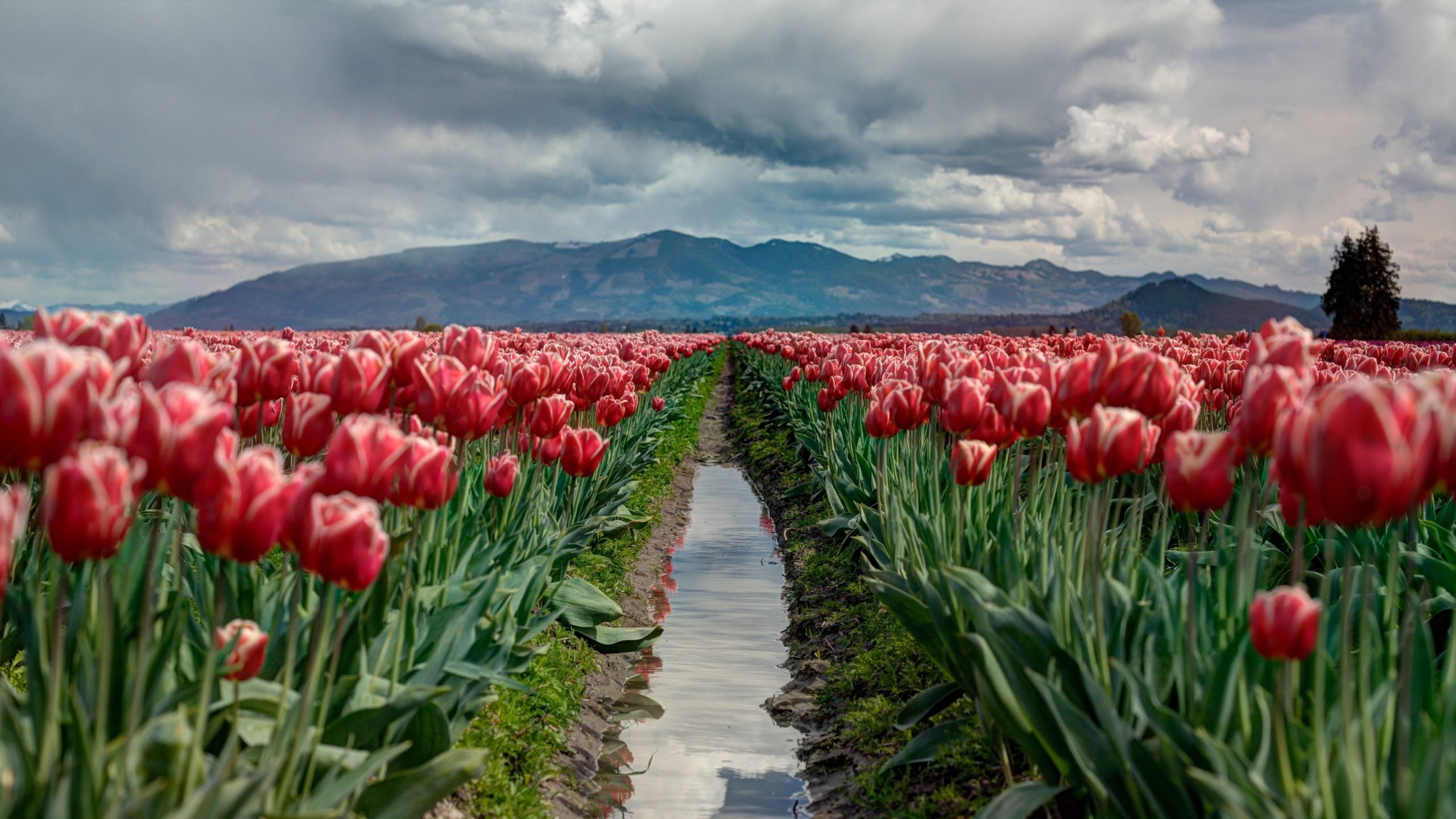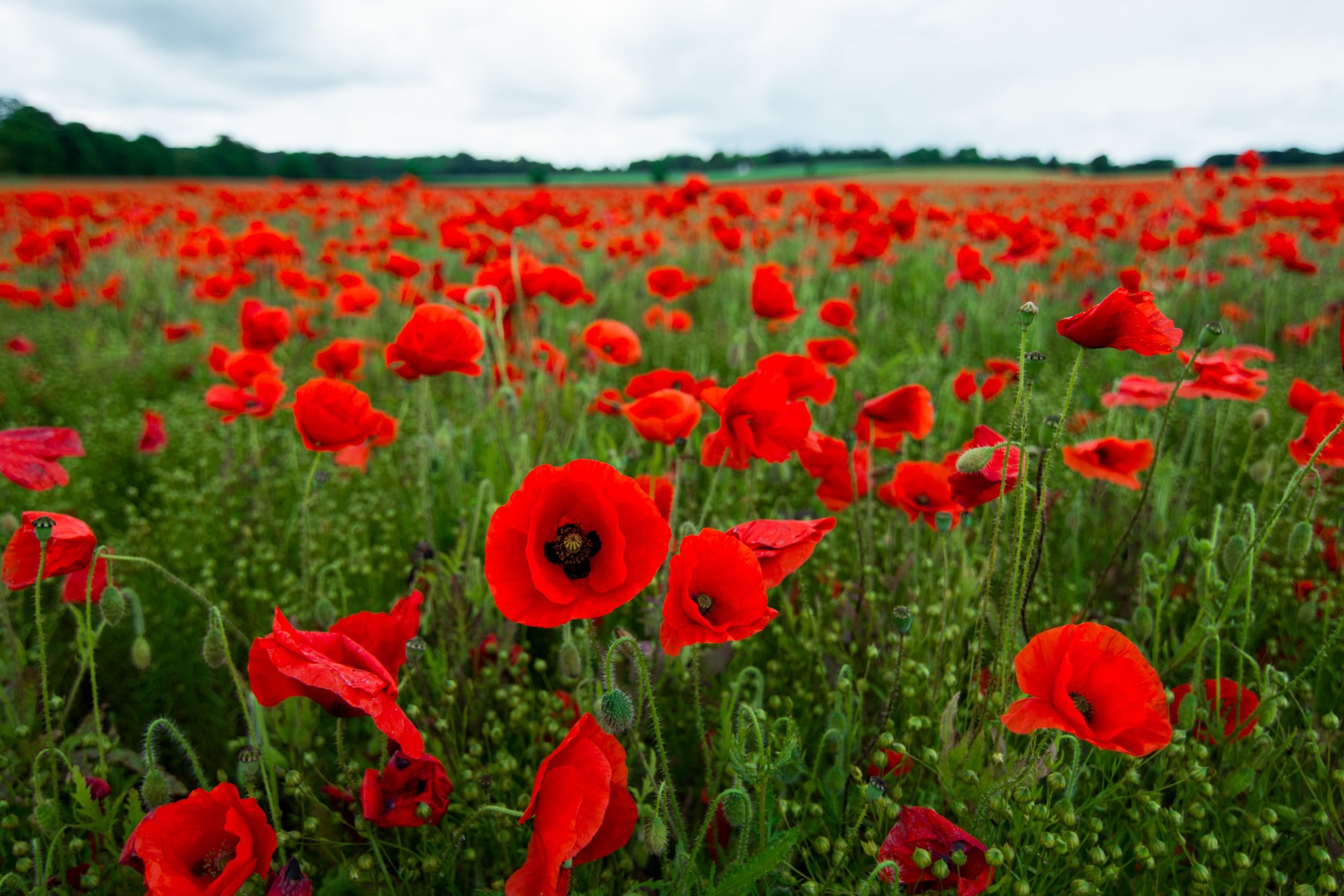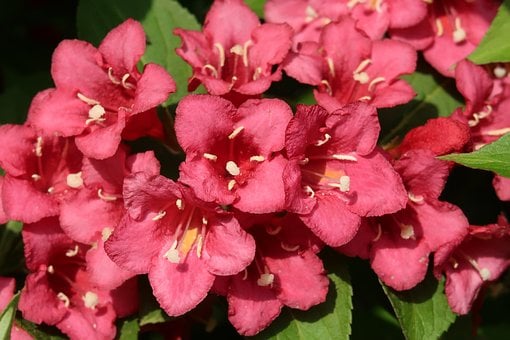Learn How to Grow Beautiful Nerium ‘Oleander’
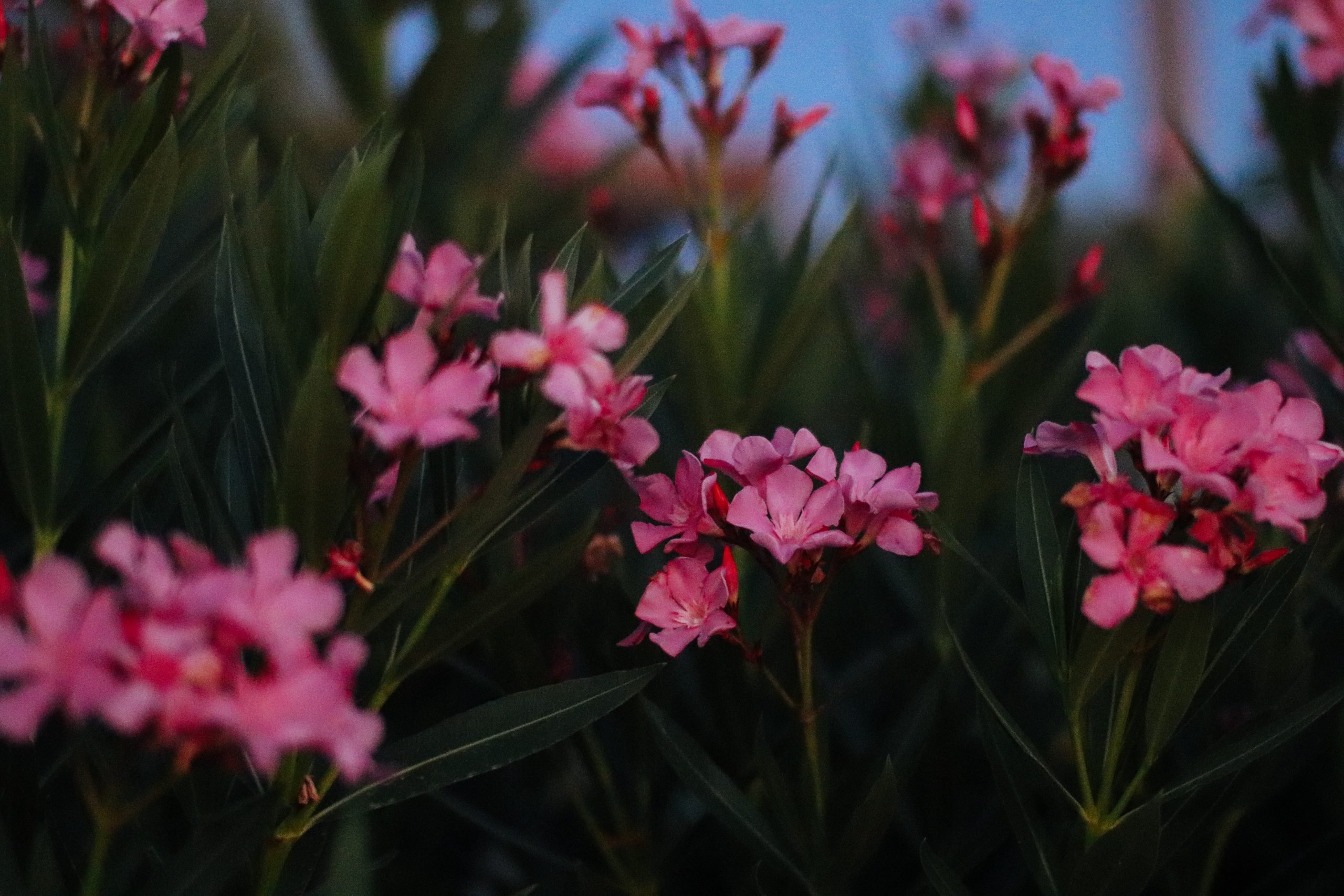
Table of Contents
Oleander, which is also called Nerium Oleander, is a magnificent shrub that is harvested widely throughout the planet. It is such a plant that can be grown both either as a small tree or a small shrub or even as a multi-trunk tree. The Nerium oleander consists of evergreen foliage that is dark green in colour, leathery, and dense, which also provides a kind of lush green and leafy wall if planted in a group.
The main part of the plant that creates attraction is the flower which is shaped delicately and fragrant. These flowers bloom from spring to warm climates, ranging from white to yellow, orange, pink, and red. Although Nerium Oleander in the UK has always been a popular choice for many gardeners for their yards, it is highly toxic and poisonous.
This is the reason that makes it essentially important to handle these plants with utmost care and responsibility of keeping them away from pets as well as kids.
How to Grow Nerium “Oleander”
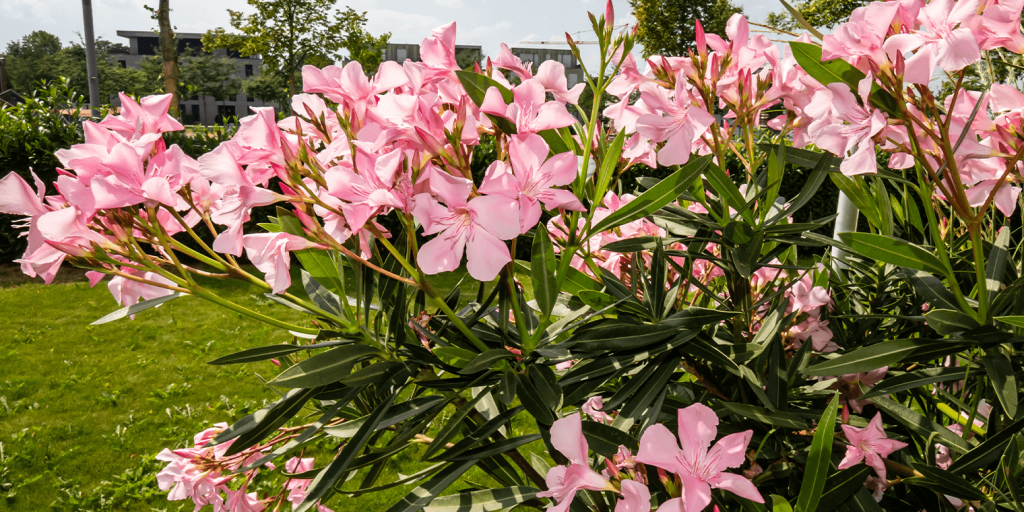
Since it has been noted down that Oleanders are toxic and poisonous, being in direct contact with them can cause skin irritation, so it becomes essential to always wear gloves while planting them. If you are thinking of planting the oleander in the ground, you need to dig it deep and wide, do not forget to mix compost into the soil, keep the plant in it and make sure the top of the root ball is even with the ground. Then, fill the hole with the rest of the soil, pat it enough to remove the airlock, and water it at the end. The same goes for the idea of planting it in a pot.
When and Where to Grow Nerium “Oleander”
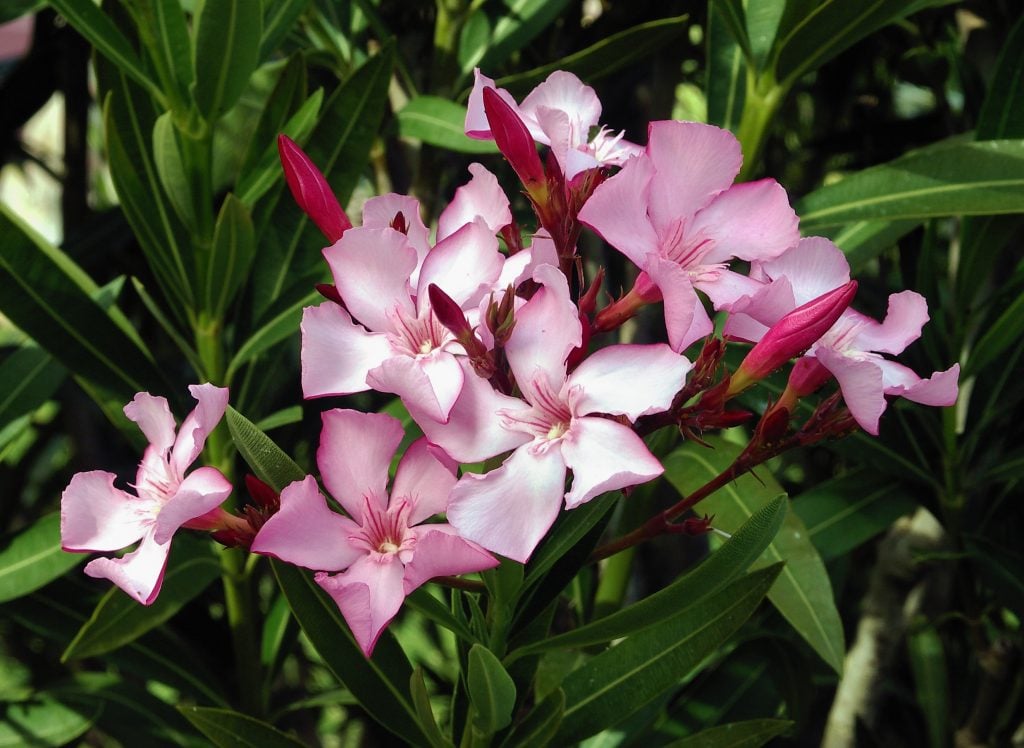
It is ideal to plant Oleander in the UK in a cold environment; it can either be in a season of spring or during the fall of it. If planting these plants in the ground, make sure to maintain a gap of 4 to 12 feet. To make use of pots or containers to plant these, the pots must be of an average height of 20 inches with holes for drainage; another thing to be sure of is to prevent them from caterpillars which can prove to be destructive for Oleanders to grow. Plant them far from the fences or any such structures to keep them safe.
Factors Responsible for Better Care of Oleander
Oleanders are the plants that need proper care and attention, like watering them regularly, whether in spring or autumn. Whether it is the light, soil, temperature, or fertilizers, planters need to be very careful with all such factors that contribute to the better growth of Nerium Oleanders and make their garden flourish with beauty and colours.
1. Soil for The Plants
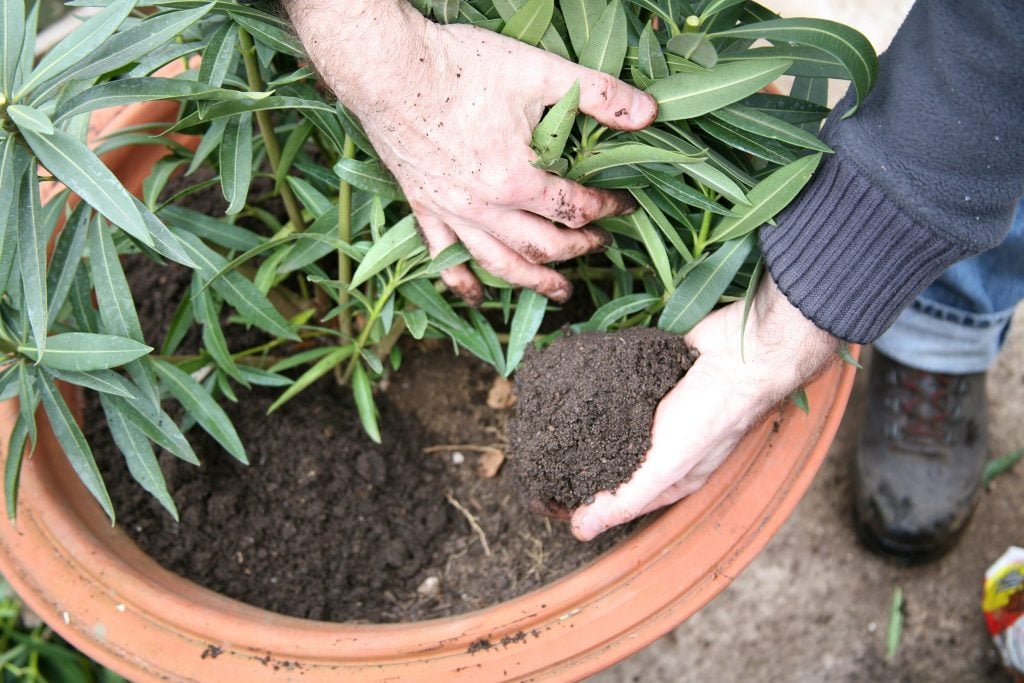
Nerium Oleanders are of such character that they can easily adapt to any pH range and type of soil, whether sandy or poor. For instance, although for these plants, an alkaline type of soil is preferred, but not necessarily. This is because they can flourish in any type of soil, whether neutral or acidic and in a type of soil whose pH scale is between 4.5 to 8. The thing to consider here is to make sure that the soil is not over-acidic in nature, and for this, you can check the acid level of the soil first.
2. Water and Fertilizers for Nerium ‘Oleander’
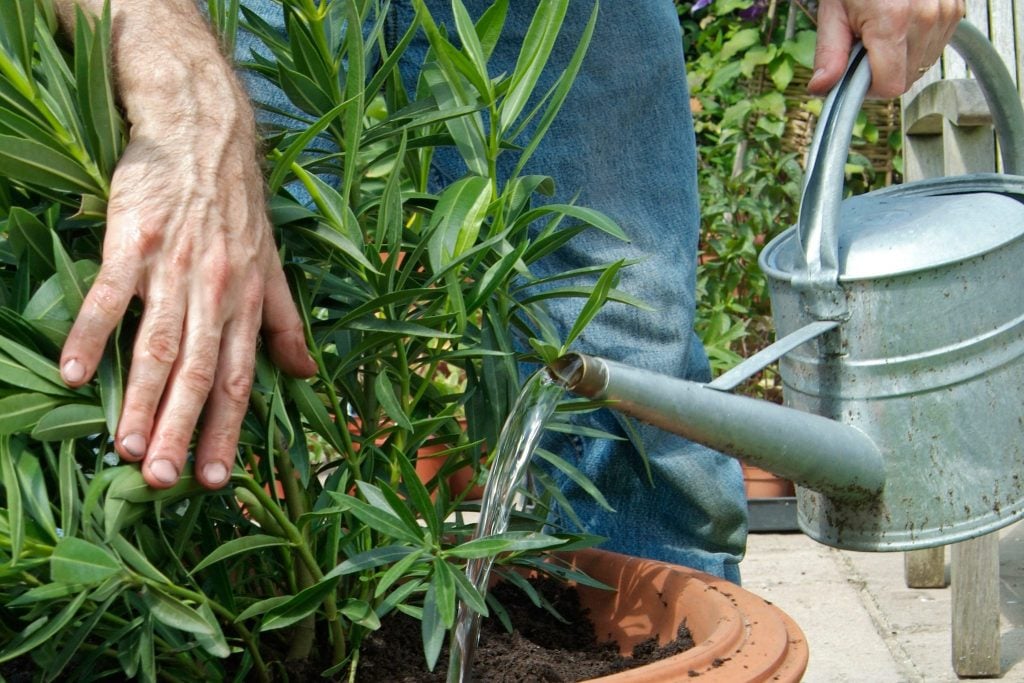
As mentioned before, Oleanders are a type of plant that needs to be watered at regular intervals. So, water them as soon as the soil turns dry. This is for those plants that are growing in the ground, but if it is in a container or a pot, such pot must contain drainage holes in it. Furthermore, during the time of winter, growth generally slows down. During this time, use the liquid form of fertilizers. Fertilizers in a balanced proportion are necessary for the early stage of growth because once the oleanders are established, they do not need a heavy dose of fertilizers.
3. Light, Humidity, and Temperature for Nerium ‘Oleander’ Growth
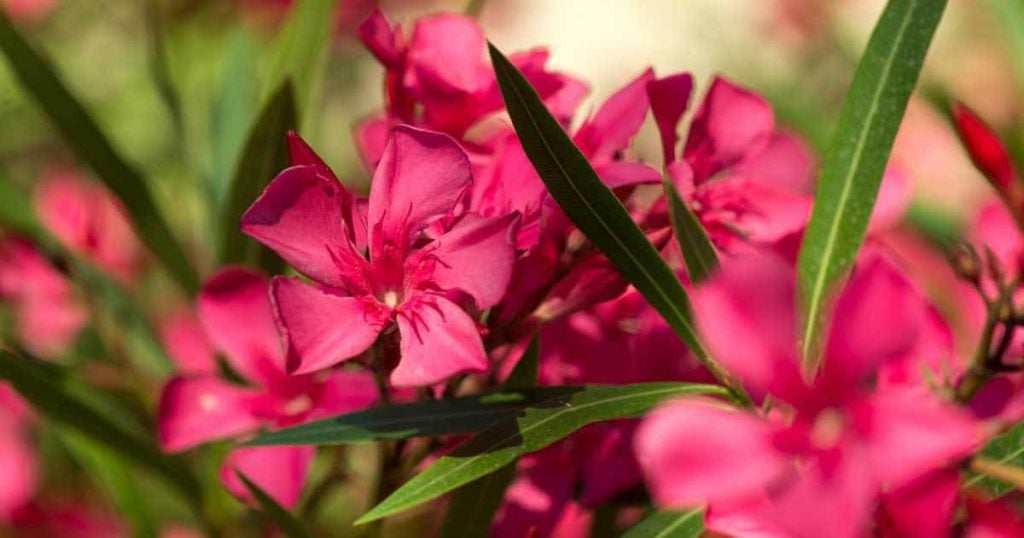
Direct Sunlight is what is generally preferred by Nerium Oleanders for thriving. If exposed to partial light, they will not be able to become equally dense. Moreover, these plants have the tendency to tolerate drought, heat, and even heavy wind. Not just that, but surprisingly they can even tolerate frost and -7 degrees Celsius of temperature. The gardeners should keep the containers indoors if the temperature falls beyond -7 degrees Celsius, and at the same time, they must be kept away from contact with pets and children.
4. Propagating the Plants to Enhance Growth
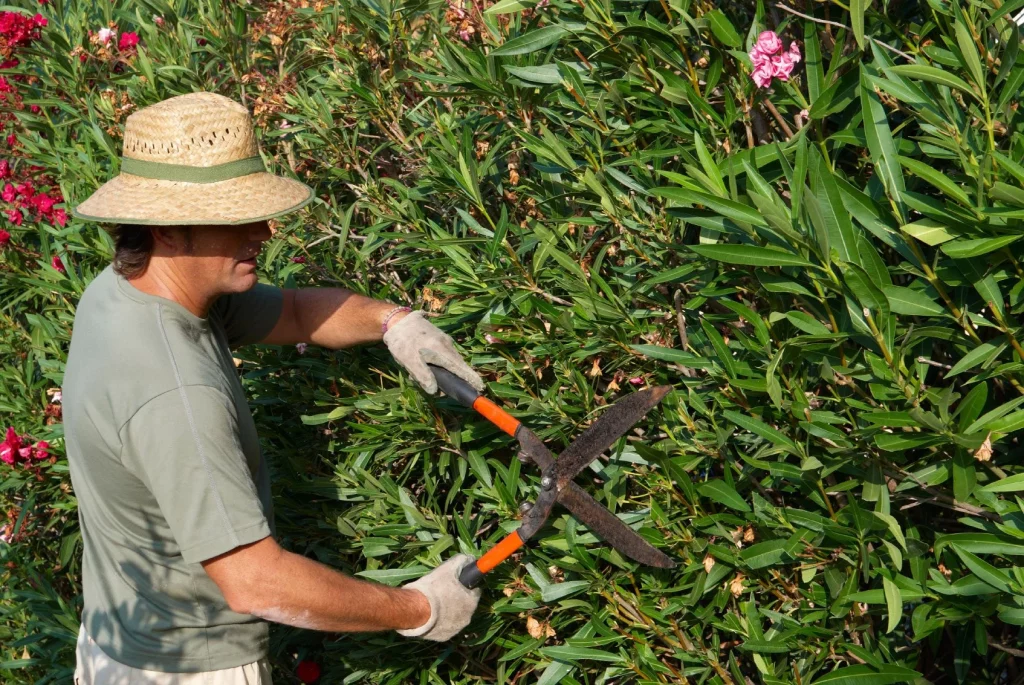
It is appropriate to propagate Oleanders before the end of summer. It should be done by cutting the non-flowering part of the oleander stems. To make the cuts, use a sharp blade or a knife and chop 10 cm off the non-flowering branch just beneath the joint of a leaf. Place the chopped part in a mix of seeds in a container or deep inside the ground in the soil. Pruning is equally important for the growth of Oleanders. If there are any damaged stems or flowerings, it is mandatory to deadhead them.
5. Eye for Pest
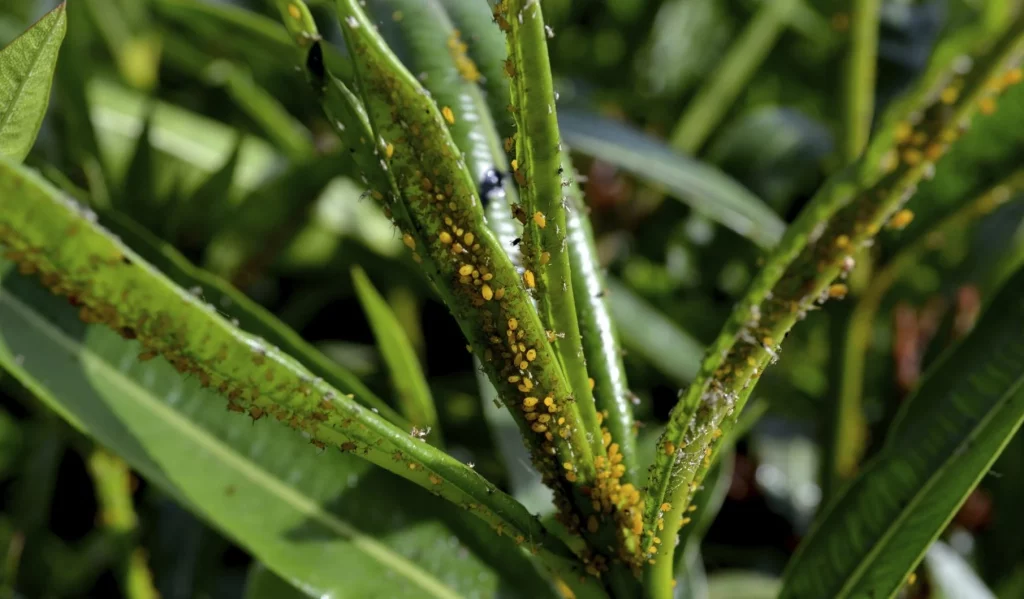
Some of the most frequent pests that affect Nerium Oleanders in the UK are scales, mealybugs, spider mites, and aphids. Although, gardeners can use various soaps that are insecticidal in order to keep such insect pests away. It is essential to chop off any stem or leaf with larvae. The gardeners need to be protected while the process of chopping off the leave or stem to prevent themselves from any irritation or disease.
Different Varieties of Nerium Oleanders
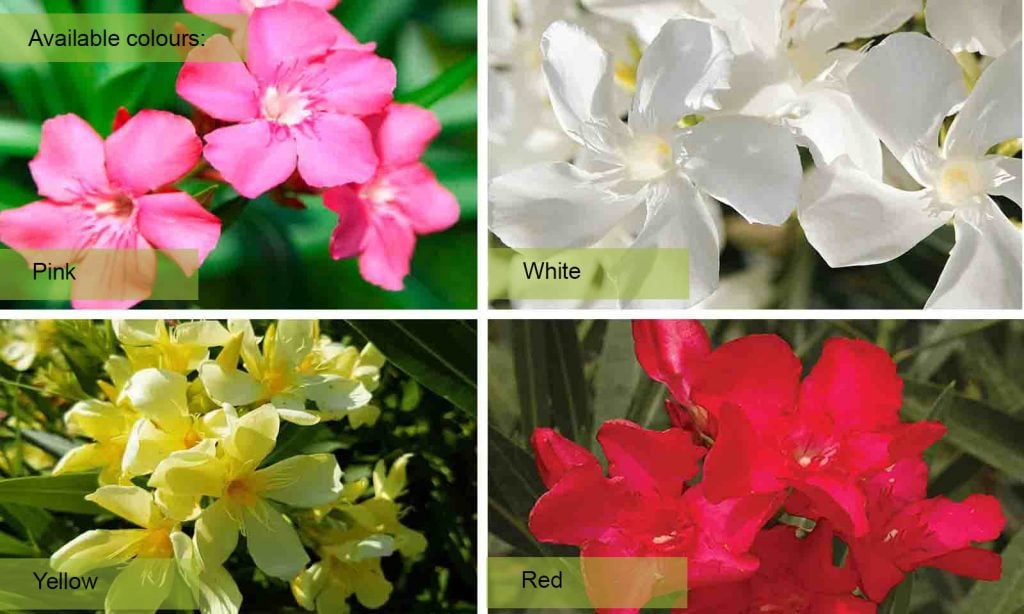
There are different varieties of the plant found, but the common type of Oleander in the UK is the ‘Hardy Red’, which is said to be the one tolerant to cold weather or temperature. Other types of Nerium Oleanders based on their colours are Hardy Pink, Kewpie, peach-coloured Sherrie Allen Turner & Kathryn Childers, red-coloured Algiers, Cherry Ripe & Hardy Red, yellow-coloured Mathilde Ferrier aka Double Yellow, I Lovenberg & Turner’s Kim Bell, and white coloured Oleander Sister Agnes & Ed Barr.
To Bring It All Together
All in all, we have seen that Nerium Oleanders in the UK are one of the most demanding plants for gardeners. These are so beautiful that they add colours to the garden or the backyard of the house. Even planters who are just beginners without any experience in gardening can also go for planting Oleanders as it needs minimum care.
The only care and attention that is needed on behalf of the ones who are planting these are to cover their hands properly to prevent them from any kind of skin problems as well as keep people, children, and animals away from them. As we have discussed earlier, these plants are highly poisonous, and if ingested even in a small amount, they can be fatal to health.
Direct contact with the skin can cause irritation in the skin, so it is better to plant it someplace where animals and children cannot reach it. Otherwise, these plants are easy to handle; whether it is soil or weather, they can adapt to any situation and soil type.
Frequently Asked Questions (FAQs)
At What Place Do the Nerium Oleanders Grow Best?
Oleanders grow best in sunny locations where they can receive direct and full sunlight. They generally prefer the soil of alkaline type, but they can adapt to sandy or poor soil as well. The ph level that is usually considered for the soil is between the 5 to 8 range. They can tolerate wind, cold, and drought as well, and this makes it easier for such plants to grow in any condition.
Are the Nerium Oleanders Easy to Grow?
Yes, the oleanders are relatively easy to grow and maintain. They are low-maintenance plants that require minimum care. With proper precaution and growing conditions, the oleanders are rewarding plants to grow. They do not require frequent watering, but as soon as the soil goes dry, watering is needed. It should be watered at particular intervals only, as excess water can prevent the plant from flourishing.
What Type of Soil Is Best Suited for The Growth of Oleanders?
The best-suited soil for the growth of Oleander is Alkaline soil, but these plants can grow even in poor soil as well. The preferred soil must have a ph range between 5 to 8. If this requirement is fulfilled, then you are good to go.
Are Oleanders Toxic?
Yes, Oleanders are highly toxic and poisonous. It is recommended to cover your hands with gloves so that your skin does not get in direct contact with them. Moreover, children and animals are also required to stay away from it.
Is It Important to Use Fertilizers for The Oleanders to Grow?
To enhance the growth of oleanders, only a balanced proportion of fertilizers are required. Try using a liquid fertilizer or those that are water-soluble. Stop using them if you notice that the leaves are starting to turn brown in colour.

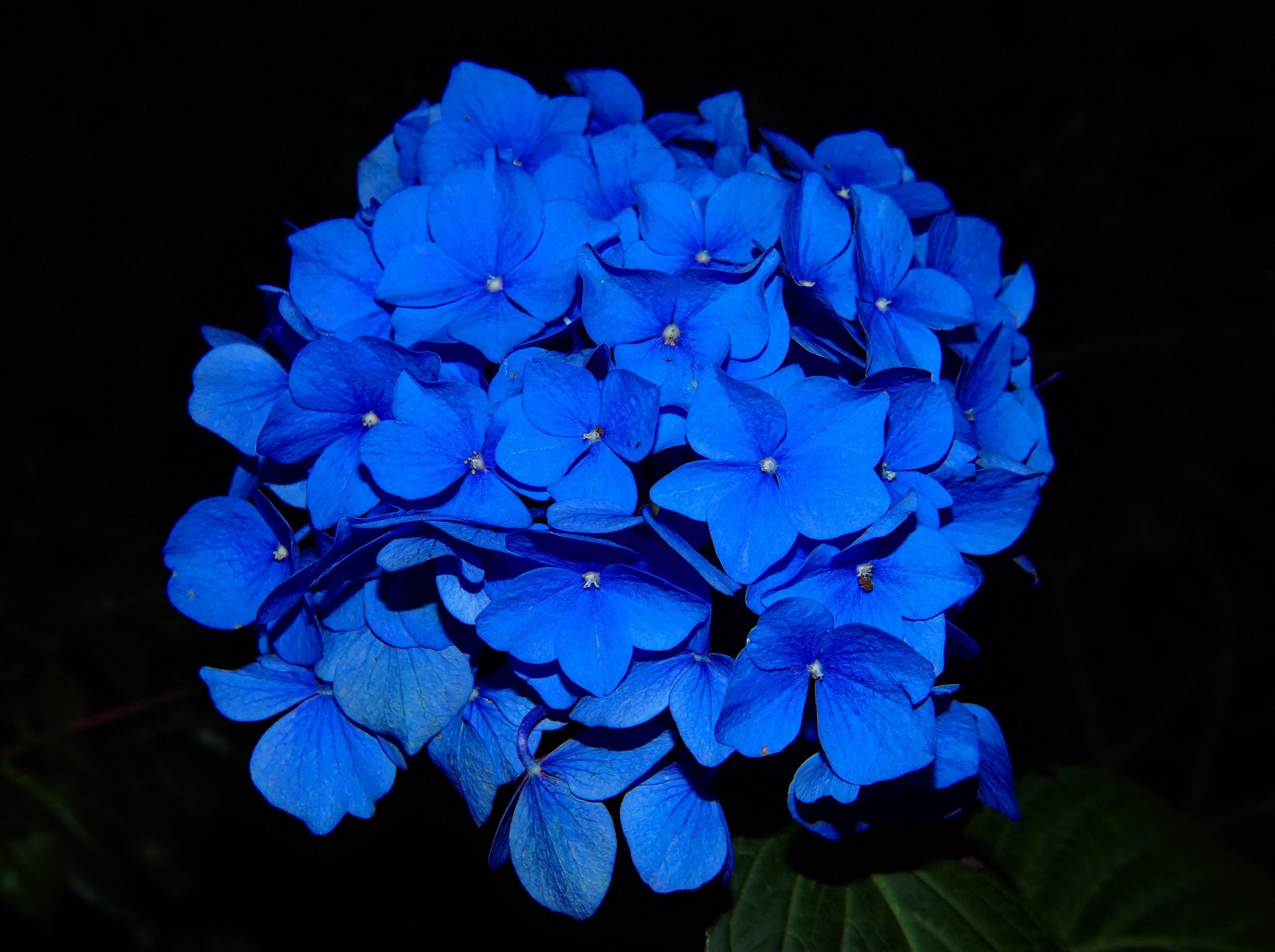
![How To Grow and Maintain Areca Palm Houseplants [Dypsis Lutescens]](https://staging.thearches.co.uk/wp-content/uploads/How-To-Grow-Care-For-Areca-Palm-Houseplants.jpg)
